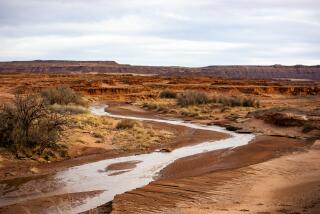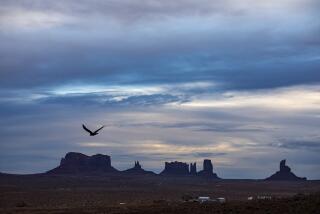Indian Canal Discovered
- Share via
Archeologists have discovered an ancient canal north of Tucson, Ariz., that may have been a major source of drinking water for a now-vanished society of Native Americans called the Hohokam.
Paul R. Fish and his colleagues at the University of Arizona said that the six-mile long structure carried water from the Santa Cruz River to a Hohokam village called the Marana Platform Site. The platform, located just north of Tucson, served as the focus for a system of scattered agricultural villages from about A.D. 800 to 1400.
Fish said that the ancient canal draws comparisons to the Central Arizona Project, a massive aqueduct that siphons Colorado River water to Phoenix and, in a few years, to Tucson. In fact, the Tucson portion of the aqueduct will run within sight of the Hohokam canal.
The Hohokam subsisted both on agriculture and on trade with other Native American groups. Their agriculture was based on a sophisticated system of canals and flood irrigation that allowed them to survive in the arid Sonora Desert.
For reasons that are still not entirely clear, the Hohokam abandoned their villages just before Spanish exploration of the New World.
More to Read
Sign up for Essential California
The most important California stories and recommendations in your inbox every morning.
You may occasionally receive promotional content from the Los Angeles Times.













